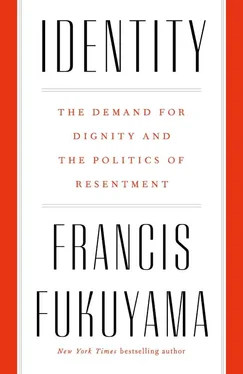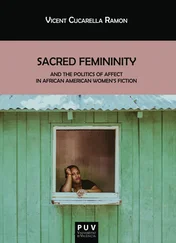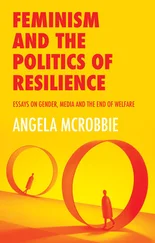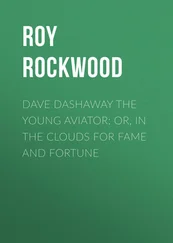Rex Glensy, “The Right to Dignity,” Columbia Human Rights Law Review 43 (65) (2011): 65–142.
Samuel Moyn, “The Secret History of Constitutional Dignity,” Yale Human Rights and Development Journal 17 (2) (2014): 39–73. The term dignity has entered into arguments over abortion, since the Catholic Church has maintained that human dignity begins at conception and constitutes an inviolable moral status.
Glensy (“Right to Dignity,” 77) notes that the word dignity appears in Federalist No. 1 (by Hamilton), but only in conjunction with the status of high officials.
Taylor, Ethics of Authenticity , 29.
David F. Strauss, The Life of Jesus, Critically Examined (London: Chapman Brothers, 1846).
Planned Parenthood of Southeastern Pennsylvania v. Casey, 505 U.S. 833.
Johann Gottfried von Herder, Reflections on the Philosophy of the History of Mankind (Chicago: University of Chicago Press, 1968).
Ibid., 31.
Herder was no particular fan of the absolute monarchies of his day and did not believe they were more conducive to human happiness than the stateless societies of North America or Africa. See Johann Gottfried von Herder, J. G. Herder on Social and Political Culture (Cambridge: Cambridge University Press, 1969), 318–19.
Ernest Gellner, Nations and Nationalism (Ithaca, NY: Cornell University Press, 1983), 33, 35.
Fritz Stern, The Politics of Cultural Despair: A Study in the Rise of German Ideology (Berkeley: University of California Press, 1974), 19–20.
Ibid., 35–94 passim.
Olivier Roy, “France’s Oedipal Islamist Complex,” Foreign Policy , January 7, 2016; Olivier Roy, “Who Are the New Jihadis?,” Guardian , April 13, 2017.
Richard Barrett, Foreign Fighters in Syria (New York: Soufan Group, 2014).
See Omer Taspinar, “ISIS Recruitment and the Frustrated Achiever,” Huffington Post , March 25, 2015.
Gilles Kepel, Terror in France: The Rise of Jihad in the West (Princeton, NJ: Princeton University Press, 2017); Robert F. Worth, “The Professor and the Jihadi,” New York Times , April 5, 2017; Robert Zaretsky, “Radicalized Islam, or Islamicized Radicalism?,” Chronicle of Higher Education 62 (37) (2016).
Sheri Berman, “The Lost Left,” Journal of Democracy 27 (4) (2016): 69–76. See also “Rose Thou Art Sick,” Economist , April 2, 2016.
Thomas Piketty, Capital in the Twenty-First Century (Cambridge, MA: Belknap Press, 2014), 20–25, 170–87.
The number of bi-billionaires, that is, individuals with wealth of $2 billion in 2013 dollars, increased fivefold from 1987 to 2013; their combined wealth is more than all of Africa’s. Milanovic, Global Inequality , 41–45.
Ibid., 11.
Alichi, Kantenga, and Solé, “Income Polarization,” 5.
Gellner, Nations and Nationalism , 124.
Adam Smith, The Theory of Moral Sentiments (Indianapolis: Liberty Classics, 1982), 50–51.
Frank, Choosing the Right Pond , 26–30.
Ibid., 21–26. See also Francis Fukuyama, Our Posthuman Future: Consequences of the Biotechnology Revolution (New York: Farrar, Straus and Giroux, 2001), 41–56.
Kahneman, Thinking, Fast and Slow , 283–85.
Federico Ferrara, “The Psychology of Thailand’s Domestic Political Conflict: Democracy, Social Identity, and the ‘Struggle for Recognition’” (manuscript presented at the international workshop “Coup, King, Crisis: Thailand’s Political Troubles and the Royal Succession,” Shorenstein Asia-Pacific Research Center, Stanford University, January 24–25, 2017).
See inter alia William Julius Wilson, The Truly Disadvantaged: The Inner City, the Underclass, and Public Policy (Chicago: University of Chicago Press, 1988).
Charles Murray, Coming Apart: The State of White America, 1960–2010 (New York: Crown Forum, 2010); Robert D. Putnam, Our Kids: The American Dream in Crisis (New York: Simon and Schuster, 2015).
Anne Case and Angus Deaton, “Rising Morbidity and Mortality in Midlife Among White Non-Hispanics in the Twenty-First Century,” Proceedings of the National Academy of Sciences 112 (49) (December 8, 2015); “Mortality and Morbidity in the Twenty-First Century,” Brookings Papers on Economic Activity , March 23–24, 2017.
U.S. Census Bureau, Current Population Survey online data tool.
Katherine J. Cramer, The Politics of Resentment: Rural Consciousness and the Rise of Scott Walker (Chicago: University of Chicago Press, 2016), 61.
Arlie Russell Hochschild, Strangers in Their Own Land: Anger and Mourning on the American Right (New York: New Press, 2016), 127.
Cramer, Politics of Resentment , 9.
Hochschild, Strangers in Their Own Land , 143.
The human potential movement was promoted by the Esalen Institute, one of whose early directors was Virginia Satir, to whose memory the California task force’s report is dedicated.
Abraham Maslow, A Theory of Human Motivation (New York: Start Publishing, 2012).
Toward a State of Self-Esteem: The Final Report of the California Task Force to Promote Self-Esteem and Personal Social Responsibility (Sacramento: California State Department of Education, January 1990), 18–19.
Ibid., 19, 24. The universal need for self-esteem is also asserted in Robert W. Fuller, Dignity for All: How to Create a World Without Rankism (Oakland, CA: Berrett-Koehler Publishers, 2008).
Philip Rieff, The Triumph of the Therapeutic: Uses of Faith After Freud (Chicago: University of Chicago Press, 1966), 4, 13.
For an overview see Katie Wright, The Rise of the Therapeutic Society: Psychological Knowledge and the Contradictions of Cultural Change (Washington, DC: New Academia Publishing, 2010), 13–28.
Lionel Trilling, Sincerity and Authenticity (Cambridge, MA: Harvard University Press, 1972), 142.
Christopher Lasch, The Culture of Narcissism: American Life in an Age of Diminishing Expectations (New York: Norton, 1978), 10, 13.
Frank Furedi, Therapy Culture: Cultivating Vulnerability in an Uncertain Age (London: Routledge, 2004), 4–5, 10.
Читать дальше












